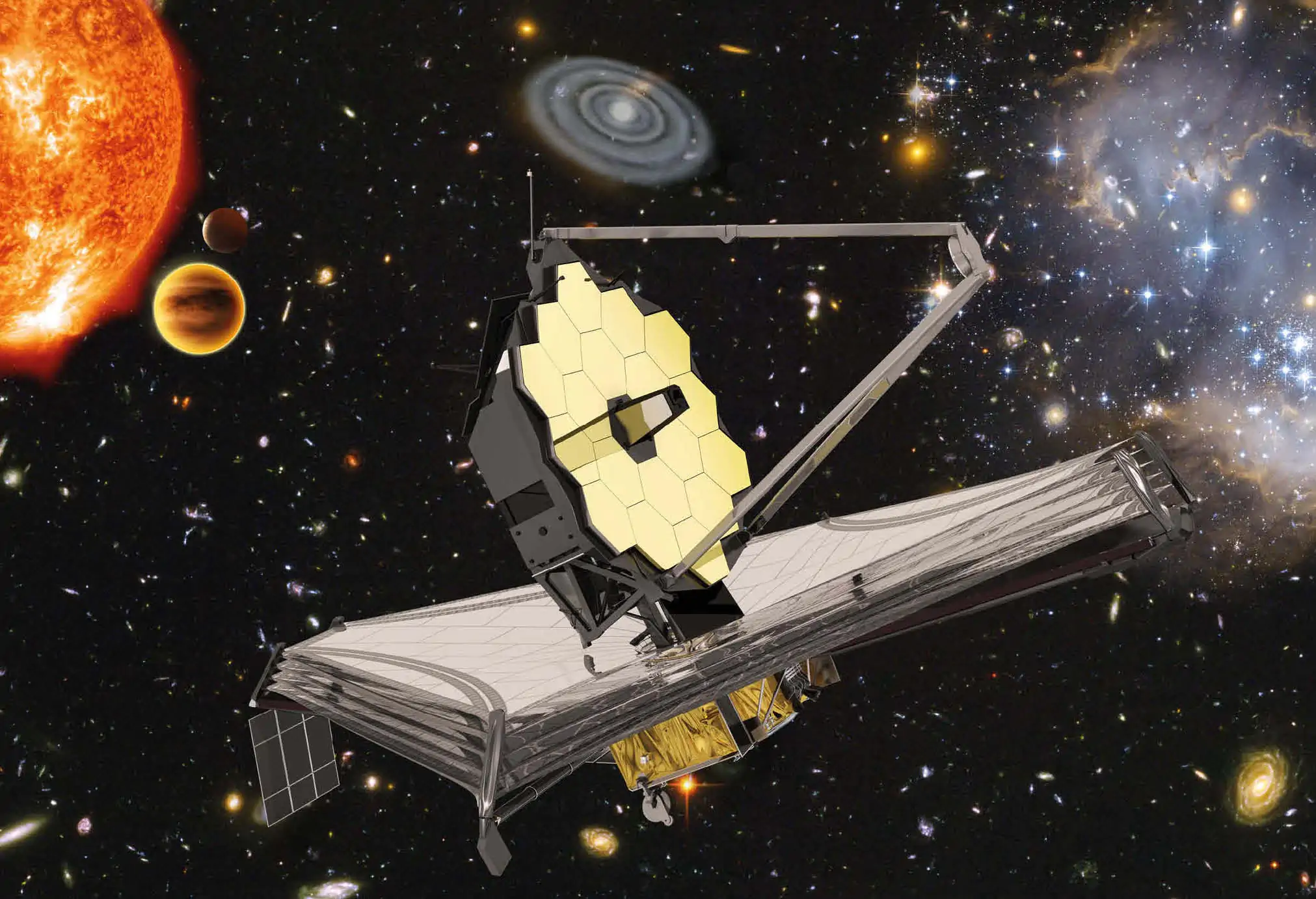Stars, just like living organisms, go through a life cycle, and then they die. However, in the case of stars, their life often ends with an explosion in their final stage; this is called a supernova.
Supernovas are believed to be essential and are thought to be one of the sources of the elements heavier than iron in the universe. This material is then expelled across space, where some of it rains down on Earth.
In this article, you'll learn more about supernovas, including the different types, how they occur, their effects on the universe, and more.
What is a supernova?
Put simply, a supernova is a powerful explosion that occurs during the last evolutionary stages of a massive star – or when a smaller star is triggered into runaway nuclear fusion.
Supernovas are the largest explosions that take place in space. They are both destructive and an act of creation as they are the primary source of heavy elements in the universe. In a galaxy the size of the Milky Way, a supernova will occur around every 50 years.

Soubrette/iStock
Types of supernovas
There are two main types of supernovas, Type I and Type II, classified according to the way in which they detonate. Type I supernovas can also be divided into three further subgroups—Ia, Ib, and Ic—on the basis of their spectra.
Type II Supernova
This is also referred to as a core-collapse supernova and occurs in the last stages of the life of a massive star. Stars that end their life as a type II supernova are supermassive, usually with eight to fifteen times the mass of our Sun. When these stars eventually run out of first hydrogen and then helium fuel, they will still have enough mass and pressure to fuse carbon.
Gradually heavier elements build up at the core. Once the mass of the star's core surpasses the Chandrasekhar limit (the maximum mass theoretically possible for a stable white dwarf, around 1.44 solar masses), it implodes.
The implosion bounces off the core and expels stellar material into space – this is the supernova. What's left is an ultra-dense neutron star.
There are two different sub-categories of Type II supernovas based on how their luminosity changes over time. The light from a Type II-Liner supernova has a fairly rapid, linear decay after maximum light, while Type II-Plateau supernovas remain bright for an extended period of time after maximum.
Both types have the signature of hydrogen in their spectra.
Type I supernovas
Type I is further divided into Type Ia, Ib, and Ic. Type I supernovas lack a hydrogen signature in their light spectra.
Type Ia: This category of supernova is thought to occur in binary star systems, which include a moderately massive star and a white dwarf. In this case, stellar material flows to the white dwarf from the larger companion star. An explosion will occur if the white dwarf accumulates enough material to raise its mass above the Chandrasekhar limit. Type Ia supernovas are quite common, and all have equal luminosity at their peak. They are therefore used by astronomers to measure cosmic distances.
Type Ib: Just like the Type II supernova, this sub-category of supernova also experiences a core-collapse but without the outer hydrogen in their spectra. Thus it is classified under Type I, but they do, however, have a helium layer present in their spectra.
Type Ic: This sub-category of supernova also occurs when a massive star collapses under its own gravity. Type Ic supernovas generally don't have hydrogen and helium in their spectra since they have been lost during their lifetime.
There are also a few other sub-categories of Type I and Type II supernovas, including Type Ic – BL supernovae, which are associated with gamma-ray bursts and superluminous supernovas.
The life cycle of a star leading to a supernova
While stars, just like all living things, go through a life cycle, starting from their birth through several stages up until death – unlike living things, it may take several billion years for a star to complete its life cycle. Before a star can reach the supernova stage, where it dies off, there are a number of stages it generally passes through. Now we would look at the life cycle of a star.

coffeekai/iStock
Stellar nebula
The lifecycle of a star begins with a nebula – a cloud of dust and gaseous materials, including hydrogen and helium. Nebulae are regions where new stars are beginning to form. Nebulae are themselves formed from the gas and dust thrown out by the explosion of a dying star, such as a supernova.
The gas and dust in a nebula are very spread out, but over time, gravity slowly pulls them together in clumps. As the clumps grow, their gravity also becomes stronger, pulling more and more clumps together.
Eventually, the clump of dust and gas becomes dense enough to collapse from its own gravity. This causes the material at the center of the clump to heat up – forming a protostar in the core of the nebula.
Protostar
The next stage after the stellar nebula is the protostar, and in this stage, the gas and dust material present in the nebula contract further. As the contraction continues, there is an increase in the temperature and pressure of the core until a nuclear reaction begins.
A protostar looks like a star, but its core is not yet hot enough for fusion to occur. The luminosity of a protostar comes from heating as the protostar contracts.
As the dust cloud collapses around the protostar, it begins to spin and flatten into a disk spinning around the protostar. These disks can sometimes coalesce into planetary systems.
The protostar stage marks the stage where the cloud of gas and dust begins to transit into an actual star, and so they form an important stage in the formation of a new star.
Once the core temperature of a protostar exceeds 10 million K, hydrogen fusion can operate efficiently. At this point, the protostar becomes a main sequence star.
Main sequence
Stars typically spend the highest percentage of their lifecycle at the main sequence stage. Also, at this stage, stars can have varying masses, and their masses determine how much time they spend in the main sequence stage.
Stars with high masses usually will have a hotter and denser core, and this enables the nuclear fusion occurring to happen faster, resulting in less time spent at the main sequence stage. For stars with a smaller mass, their cores are relatively smaller, leading to the star spending more time at the main sequence stage.
The main sequence stage is marked as a stage where nuclear fusion is relatively stable. In this stage, fusion releases energy that heats the star, creating pressure that pushes against the force of its gravity, creating a balance in the inward and outward pressures.
Red giant
Stars that are a similar size to the Sun or smaller may form into red giants.
When these main sequence stars run out of hydrogen in their core, they start to collapse because the energy produced by fusion is no longer enough to fight the force of gravity. However, the core contracts and becomes denser; its temperature and pressure increase enough to allow helium to fuse into carbon, which releases more energy. As hydrogen fusion moves to the star’s outer layers, these expand and become brighter.
The result is a red giant, which eventually becomes unstable and continues expanding. Eventually, its outer layers blow away, creating an expanding cloud of dust and gas. The expansion of the outer part continues gradually until it becomes widened and diffused into space. At this point, it is called a planetary nebula. The Sun will become a red giant in about 5 billion years.
Planetary nebula and white dwarf
Here, we already have the outer part of the red giant star spread in space but in a direction circling the core (white dwarf). With this, the outer layers are already in the form of gas and dust that envelopes the heavy, dense core known as the white dwarf. The core white dwarf produces some radiation that ionizes the gases and dust shell, causing it to emit visible light that ranges from blue-white to red. However, a white dwarf produces no new heat of its own and gradually cools over billions of years.
Supernova
Stars that have a mass greater than around eight times the mass of our Sun will follow a different path. When it runs out of hydrogen fuel in its core, it will still have enough mass and pressure to fuse helium.
What happens next depends on the star's size.
A main sequence star just a bit larger than the Sun’s mass will start fusing helium to carbon, as with lower-mass stars. But when the core runs out of helium, it shrinks, heats up, and starts converting its carbon into first neon, then oxygen, silicon, and iron. Each new fuel releases energy that keeps the core from collapsing, but each new fuel is used up more quickly than the last.
By the time silicon fuses into iron, the star is almost out of fuel. The core then collapses and rapidly expands back to its original size, creating a shock wave that results in a supernova. The remnant core forms a superdense neutron star.
Stars that are more than around three times the mass of the Sun will instead collapse into a black hole.
Effects of supernovas on the universe
A supernova will eventually fade out, yet they leave an outstanding effect on the universe. The study of supernovas has helped astrophysicists and astronomers to better understand that our universe is constantly expanding. Scientists then believed and concluded that the most important effect of a supernova on the universe is that it releases some vital elements from its core as it explodes.

cokada/iStock
As a supernova explosion occurs, essential elements like iron, potassium, neon, etc., are released into space and eventually condense to form new stars – starting the cycle over again. Some of the elements released will also eventually form planets – including the Earth.
Studying supernovas and their importance in astrophysics
The study of supernovas has enabled us to understand how stars evolve and the several life stages they pass through before supernovas occur. It has provided an understanding of the significance and role that supernovas play in the formation of new stars, planets, and other bodies.
To astrophysicists and astronomers, the knowledge of supernovas, the life cycle of stars that lead to supernovas, and the effect of a supernova explosion are important because it also helps them better understand the chemical evolution and expansion of the universe. The study of supernovas has also not only helped us discover information about how heavy elements are formed in a star but also how black holes and neutron stars are formed.
The study of star formation has also been used as a tool in ascertaining the distance between galaxies.
Conclusion
Although a supernova might appear as a quick explosion, its importance in forming stars and other planetary bodies can not be overemphasized. And apart from that, we cannot underestimate how valuable they are in releasing essential elements into the universe.




 BlocksInform
BlocksInform


